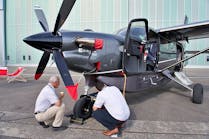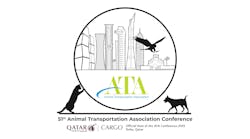The general aviation industry has shown tremendous resolve throughout the pandemic. In 2022, it will be important that we continue to build upon the growth and opportunity that we worked hard to achieve.
The industry’s focus will be on delivering on the strong new aircraft and equipment orders in response to the demand we see across the full spectrum of general aviation products that include business jets, turboprops, pistons and rotorcraft. There will also be a continued focus on enabling the introduction of new and innovative technologies improving utility and safety as we saw with several key enablers entering the fleet these past couple of years.
Additionally, the new entrants for both hybrid and electric propulsion aircraft, as well as the steps being taken to enable a new era in vertical flight will continue to get broad and focused attention. With this emergence, it will be vital that industry works with policymakers to ensure their successful entry into the market in the coming years and the adoption of advanced air mobility concepts.
While the new year does look promising, we will also face our fair share of challenges. We will need to continue to navigate through pandemic-related setbacks, which include ongoing supply chain and workforce challenges. In addition to the constraints imposed by shortages of parts and people, we must be prepared for potential headwinds which could affect safety or present risks to the industry and its consumers.
We have already seen one of these challenges begin to play out from the mess that the FCC created in their sell-off of 5G C-Band spectrum without consideration of appropriate parameters and understanding of impact it would have on aviation radio altimeters. Short term delays have been aimed at mitigation strategies around some of the nation’s biggest airports, but safety concerns remain for possible interference with safety-critical equipment outside of those zones, particularly with rotorcraft. It is imperative that FCC, FAA and the telecommunications and aviation industries continue to work towards technical solutions and mitigation strategies which ensures safety and minimizes the impact on both the national aviation system and expansion of telecom operations.
Another challenge comes from localized efforts that we see ramping up to ban the availability of leaded avgas (100LL) at airports. Such bans would create a significant safety hazard in our national air transportation system. While the industry continues to work towards viable alternatives to leaded avgas, a patchwork of airports that do not have the only fuel that the fleet of piston airplanes can operate safely is a recipe for a safety disaster. The dangerous effects of misfuelling and fuel starvation could become more prevalent due to misunderstanding and misinformation about whether certain airplanes can and cannot safely use various grades of unleaded fuels. The federal government must ensure that our national transportation system maintains its current level of safety and operation while it works with industry on a safe transition to an unleaded future state.
Our industry stands ready to meet these challenges and take the needed approaches to ensure the safety and security of the entire aviation community remains strong. We are optimistic that we can continue to build upon our industry’s perseverance and fortitude to create more opportunities for advancement and growth.



